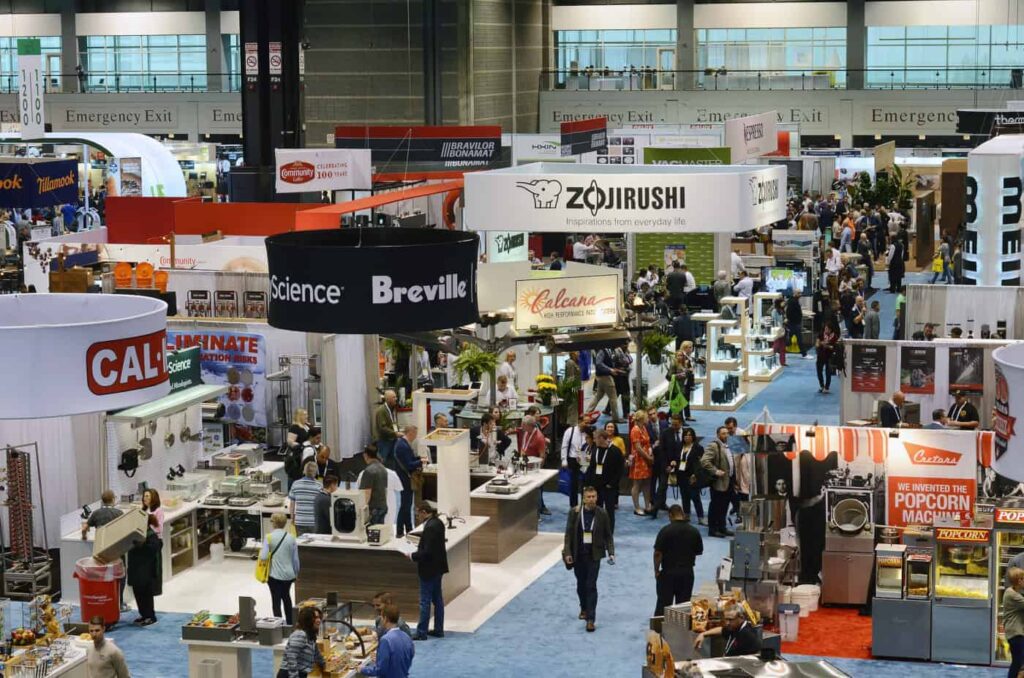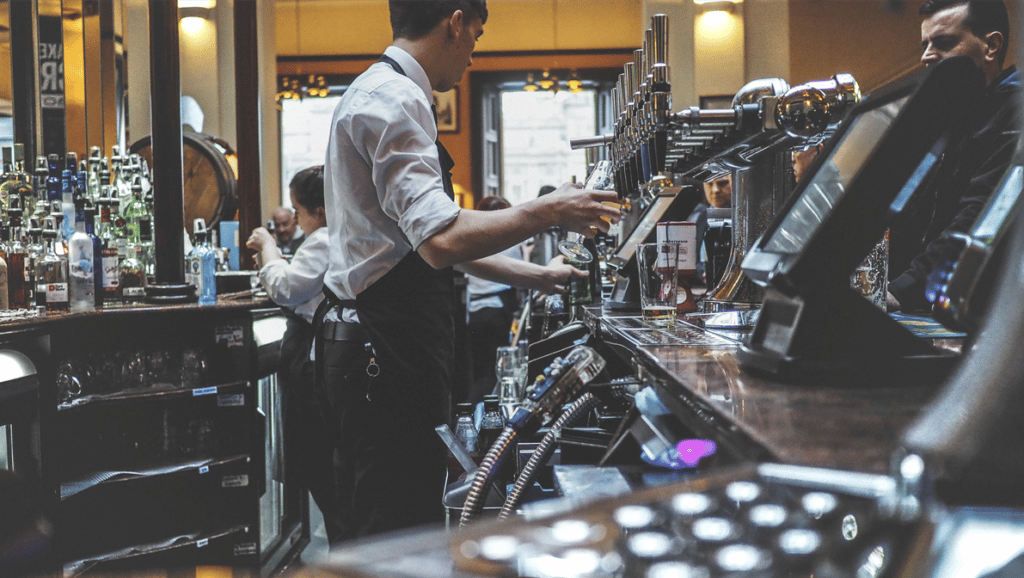As the holiday rush has come to a close, many restaurants’ biggest struggle remains in finding employees. As of November of last year, over 10% of total job openings in the United States are in the restaurant industry. The issue has dragged on since the pandemic in 2020, when millions of workers left not only restaurants, but the labor market in general during the Great Resignation.
Restaurants have felt the labor shortage more than most industries, with servers forced to cover larger sections and kitchen wait times substantially longer. Many operators have even shut down table sections to compensate for the labor shortage.
Staffing is a unique challenge in the restaurant world. Restaurants need 62 applicants on average to make one hire. But even once that hire has been made, it’s not always easy to keep people around. Food service workers have some of the lowest tenures in the labor market, according to the Bureau of Labor. The high turnover means managers must always treat hiring as a top priority, even without today’s labor shortage.
So how to restaurants combat the labor crisis and find employees? How do you get more and better applicants to your job postings? And probably most importantly, how do you make sure you’re hiring the right people?
The answers to these questions all depend on having a thorough, proficient hiring strategy in place at your restaurant. If you haven’t made updates in a while, it’s time to revamp your hiring process, which includes assessing the entire process: job postings, interviews, and onboarding/training.
Here are the seven mistakes restaurant make in their hiring process as well as strategies to fix them. For a deeper dive into this topic, check out our free guide on restaurant hiring.
#1 Making Long & Outdated Job Posts
Let’s face facts. People aren’t reading every line of your job posting. In fact, the average applicant only spends about three minutes scanning a job post for the most important information. And with the ability to one-click apply on job boards today, the engagement is even lower.
This means it’s increasingly important to be quick and direct in job postings. Odds are, your employees know they need to multi-task. A server knows they need to take orders. A line cook knows they’re working with food.
Be brief and succinct. Move the most important information to the top, where it’s most likely to be read. When you’re done, give it a read. How close are you to that three minute mark?
You’re probably also familiar with workplace clichés and you can be sure your applicants are too. Highlighting culture is important, but be authentic. If you’re telling people “we’re a family here” or about “massive growth opportunities”, they might be rolling their eyes. While these things can be true, write them in your own words.
#2 Relying Too Heavily On Job Boards
Job boards are a great way to get a lot of applicants quickly. But are those applicants turning into hires?
While restaurants get 72% of applicants job boards on average, only 40% of those applicants lead to hires.
Look to your own data to see where your hires are coming from. If you use a restaurant workforce solution, you can view applicant sources and their conversion rates to interviews and hires. This is an invaluable tool for calculating your ROI from paid job postings.
#3 Not Making Use Of Enough Sources
As we’ve just seen, nearly 60% of hires are coming from outside job boards. So where do restaurants get these hires?
Referrals: If you’re not making use of a referral program, 2023 is the time to start. Referred employees are 18 times more likely to be hired than other sources. Offer an incentive – a gift card or cash reward always works! – to your employees to encourage them to reach out to their networks.
Career Pages: The average restaurant gets 11% of applicants from their careers page, but those applicants lead to 40% of overall hires. Why? Applicants from your career page are high-quality because they show specific intent to join your business. They’re not applying in one click as they scroll through a job board. Take special note of these applicants when setting up interviews.
Social Media: Social media isn’t just for sharing your Trivia Tuesday and Wine Wednesday. Posting jobs on your social feeds can be a great way to source candidates. The majority of people following you are big fans, and are likely to share your job posting with others.
Presto! You’ve got these great places to find employees, but this is only really step one of the process. Introducing the next mistake…
#4 Ineffectively Communicating With Applicants
Here’s another cliche: communication is key. Communicating with your applicants is no different, but many restaurants drop the ball.
If you’re still calling your applicants, 2023 is the year to move that process to texts. Phone calls are a great backup, but the average response from potential employees is below 20%.
Texting applicants yields higher response rates more quickly. Applicants are 5x more likely to read a text and 7.5x more likely to respond.
Many modern hiring solutions, including Restaurant365, make this process easy by including text messaging and integrate with multiple hiring platforms.
#5 Slow Communication With Applicants
Communicating the right way is important, but so is being timely. Restaurant operators wait 7.7 days on average to contact new applicants and 14.4 days to hire them. In today’s hiring landscape, where applicants have dozens of jobs available to them, waiting too long means running the risk of having applicants moving on.
Check your incoming applicants daily and respond within 2-3 days. This may seem like it requires a lot of attention, and it does. But it can often make the difference in finding a great new hire and missing out.
Texting applicants (#4) will help mitigate any delays in communication and keep the process moving. The average applicant reads a text message in three minutes, whereas emails and voicemails take hours to be heard or read.
#6 Ineffective, Rushed Interviews
After spending so much time and effort to find applicants, it’s crucial to put the same effort into the interview itself. But in a hectic environment, many restaurant managers don’t take this step seriously enough. It’s more than putting a name to a face and asking about job experience.
Here are a tips to improve in your in-person interview process:
#1 Make use of the pre-interview. Don’t wait until the in-person interview to learn about the applicant. Instead, use prescreen questions, phone interviews, and references to learn about the person before you meet. This ultimately cuts down interview time, and ensures the applicants
#2 Train managers on your hiring process. Anyone who interviews should have a good understanding of your process. They should have a list of the questions asked to every applicant, so you’re assessing people the same way. Ineffective training – or no training at all –of interviewers leads to the hiring of subpar employees.
#3 Be thorough in your interviews. Don’t rely solely on the tradition sit-down interview process. Stages, walking interviews, and team member follows, are all great options. Even if it’s just a brief walk through your establishment, this part of the process can tell you a lot about your applicants. Ask questions along the way and give them a chance to respond.
#7 Poorly-Executed Training & Onboarding
Employee onboarding is really the final step of the interviewing process, and it’s just as important as the interview itself. A poor onboarding experience doesn’t just lead to ineffective staff but will turn into job dissatisfaction and premature turnover.
If you’re still relying on printed onboarding forms and training documentation, it may be time to update. Adopting a digital hiring solution will ensure the process is seamless and always have the needed training materials. It also allows you to easily track employee onboarding along the way. Managers and administrators can easily complete their portion of I-9’s and other onboarding tasks.
Receiving feedback should be a scheduled part of a new hire’s training and needs be delivered as early in the process as possible. If there’s part of the process that needs improvement, you should know about it. Don’t rely on casual conversation. Make feedback a direct step in the process.
Bringing It All Together
It’s an employee market out there. Restaurant workers have hundreds of jobs to choose from, so anything you can do to attract talent is crucial. Every step of the hiring process matters. Hiring is also a moving target, not something managers can set and forget. Managers should check in at least once every few months to review basic metrics, like applicant and hire source, and reassess where they’re focusing their time and budget.
We hope these strategies can help give your restaurant hiring the little revamp it needs and helps you attract great hires for your team. Good luck!



